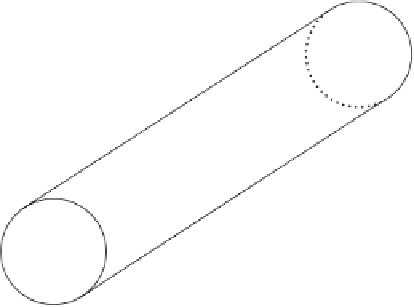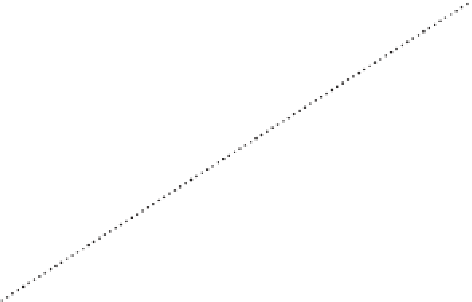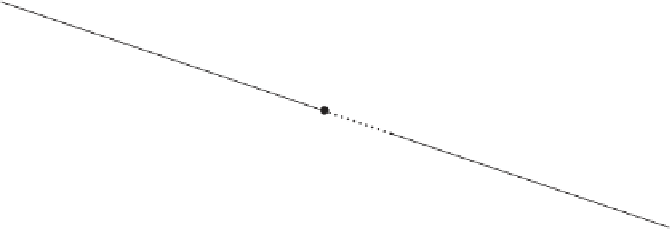Graphics Reference
In-Depth Information
A
Q
P
B
r
Figure 5.26
The line, ray, or segment specified by points
A
and
B
is intersected against the
cylinder given by points
P
and
Q
and the radius
r
.
cylinder surface can be stated as satisfying the implicit equation
v
·
d
r
2
(
v
−
w
)
·
(
v
−
w
)
−
=
0,
where
v
=
X
−
P
,
d
=
Q
−
P
,
and
w
=
d
d
.
d
·
This equation simply states that when taking the vector
v
from
P
to a point
X
and subtracting
w
(the component of
v
parallel to
d
) the resulting vector (which is
perpendicular to
d
, the direction of the cylinder) must have a length equal to
r
for
X
to be on the cylinder surface. The equation has been squared to avoid a square root
term, which simplifies further processing.
The intersection of a line
L
(
t
)
A
), defined by the points
A
and
B
(Figure 5.26), with the cylinder can be found by substituting
L
(
t
) for
X
in the previous
equation and solving for
t
. Writing
v
=
A
+
t
(
B
−
=
L
(
t
)
−
P
=
(
A
−
P
)
+
t
(
B
−
A
)as
v
=
m
+
t
n
,
with
m
=
A
−
P
and
n
=
B
−
A
, after some manipulation the equation turns into
n
t
2
2
m
t
·
d
)
2
·
·
·
d
)
2
(
n
(
n
d
)(
m
d
)
(
m
r
2
·
−
+
·
−
+
·
−
−
=
n
n
m
m
0.
d
·
d
d
·
d
d
·
d
The repeated division by
d
·
d
can be eliminated by multiplying both sides by
d
·
d
,
giving
(
d
d
)
2
t
2
2
(
d
d
)
t
r
2
)
·
d
)(
n
·
n
)
−
(
n
·
+
·
d
)(
m
·
n
)
−
(
n
·
d
)(
m
·
+
(
d
·
d
)((
m
·
m
)
−
d
)
2
−
(
m
·
=
0.











